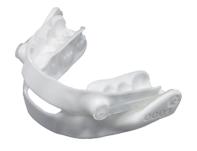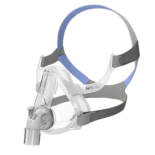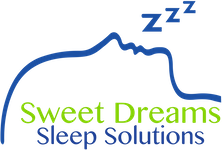Sleep Apnea Treatments
Once you are diagnosed by a sleep apnea professional, the treatment options vary depending on the severity of your case. However, there is something out there for everyone to fit your specific needs. Pick the option that works best for you, and watch the results start flowing in.
- Oral Appliances
As people become more aware of sleep apnea, using an oral appliance is increasing in popularity. Oral appliances come in hundreds of shapes and sizes and can treat all cases of Obstructive Sleep Apnea. Finding the right appliance for you can be a simple task with the help from your Doctor. These appliances are worn in the mouth similar to an orthodontic retainer or mouth guard. The job of an oral appliance is to hold the lower jaw forward just enough to keep the airway open and prevent the tongue and upper airway muscles from collapsing onto the airway resulting in lack of oxygen. This will make sure the airway is kept open, and you will be breathing with no problem throughout the night. Appliances bought over the counter may not be as effective and can result in jaw problems, so be sure to get fitted for your appliance to be guaranteed a proper treatment.

- Positive Airway Pressure Device
Another form of treatment for sleep apnea is a positive airway pressure device. This machine is worn over the nose to supply pressurized air that continuously flows into the throat, which keeps the airway open and prevents it from collapsing. Studies show that patients feel much better after using these machines while sleeping, and even notice the symptoms reducing as an effect of using these devices continuously.

- Upper Airway Stimulation Therapy
For patients who find it difficult to use the oral appliance or pressurized air machines, Upper Airway Stimulation Therapy may be a better option. This therapy practice works inside the body using your natural breathing and a small generator. When sleeping, this generator senses your natural breathing patterns and sends a mild stimulation in order to keep the airway open. And for patients who dislike wearing masks or oral appliances to bed, this technique doesn’t require either of those.
Personal Preference
When diagnosed with Sleep Apnea, it can be overwhelming when looking for devices to help you sleep safe and sound. With the help of your doctor, weigh your options and decide which choice is best for you in the long run. Happy sleeping!
